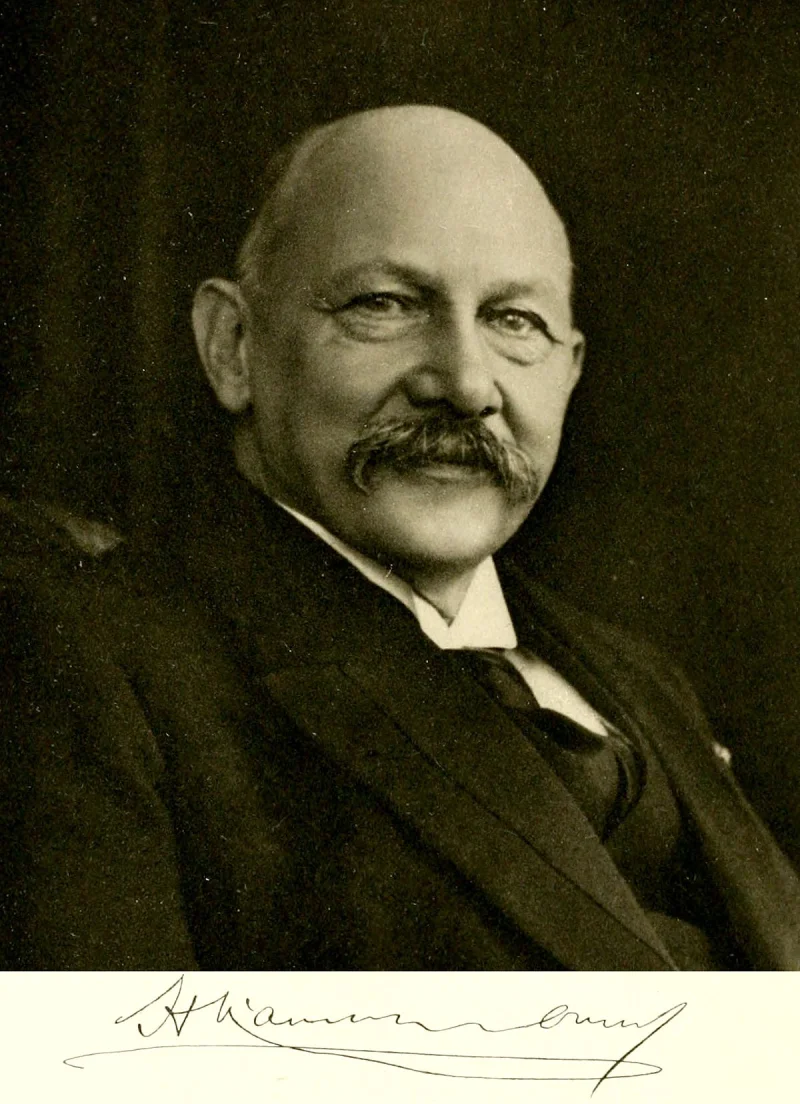Short Summary
Heike Kamerlingh Onnes was a pioneering Dutch physicist renowned for his groundbreaking work in low-temperature physics. He is most famous for his discovery of superconductivity in 1911, a phenomenon where electrical resistance in certain materials completely disappears at very low temperatures. Onnes' meticulous experimentation and innovative techniques in cryogenics significantly advanced the field of physics, earning him the Nobel Prize in Physics in 1913. His work laid the foundation for future scientific and technological developments in superconductor research.
Early Life & Education
Born on September 21, 1853, in Groningen, Netherlands, Heike Kamerlingh Onnes was the eldest son in a family with a strong academic tradition. His father, Harm Kamerlingh Onnes, was a respected brick manufacturer, and his mother was Anna Gerdina Coers. Heike exhibited a keen interest in science from a young age, which led him to pursue studies at the University of Groningen. He later attended the University of Heidelberg, where he studied under notable physicists such as Robert Bunsen and Gustav Kirchhoff. Onnes completed his doctoral studies back at the University of Groningen in 1879, focusing on the theory of elasticity.
Career Highlights
After completing his education, Heike Kamerlingh Onnes joined the University of Leiden in 1882 as a professor of experimental physics. Here, he established the renowned Cryogenic Laboratory, where he conducted extensive research on the properties of materials at extremely low temperatures. Onnes was a pioneer in liquefying helium in 1908, an essential step towards achieving lower temperatures for experimentation. His most notable discovery came in 1911 when he observed superconductivity in mercury, marking a significant milestone in physics. Onnes' dedication to precision and methodical experimentation earned him international recognition and numerous accolades.
Major Achievements
- Discovered superconductivity in 1911, a major breakthrough in understanding electrical properties at low temperatures.
- Successfully liquefied helium in 1908, paving the way for advanced cryogenic research.
- Awarded the Nobel Prize in Physics in 1913 for investigations on the properties of matter at low temperatures.
- Established the Cryogenic Laboratory at the University of Leiden, a leading center for low-temperature research.
Famous Quotes
- "Through measurement to knowledge."
- "The noble art of experimentation is to find that which is not yet known."
Interesting Facts
- Onnes was one of the first to use liquid helium to achieve temperatures close to absolute zero.
- His discovery of superconductivity was initially met with skepticism until further validated by subsequent research.
- Onnes' meticulous record-keeping and documentation set a high standard for experimental physics.
- He was a strong advocate for the practical applications of scientific discoveries.
Legacy / Influence
Heike Kamerlingh Onnes' discovery of superconductivity and advancements in cryogenics have had a profound impact on modern physics and technology. His work laid the groundwork for the development of MRI machines, quantum computing, and other technologies reliant on superconducting materials. Onnes' legacy endures in the continued exploration and application of superconductors in various scientific and industrial fields.
FAQ
Q: Why is Heike Kamerlingh Onnes famous?
A: He is famous for discovering superconductivity and his pioneering work in low-temperature physics.
Q: What award did Onnes receive for his work?
A: He was awarded the Nobel Prize in Physics in 1913.
Q: What is superconductivity?
A: Superconductivity is a phenomenon where a material exhibits zero electrical resistance at very low temperatures.
Q: Where did Onnes conduct his research?
A: He conducted his research primarily at the University of Leiden in the Netherlands.










